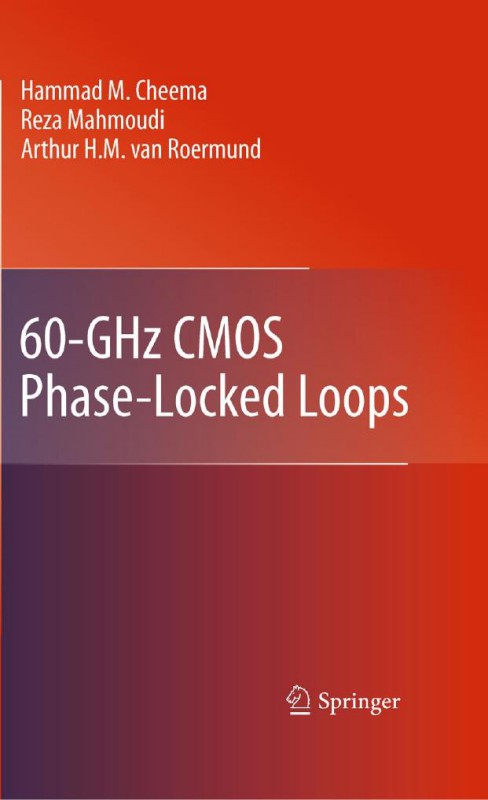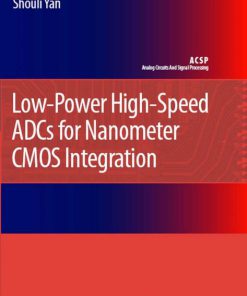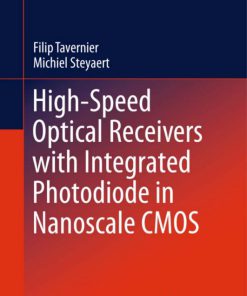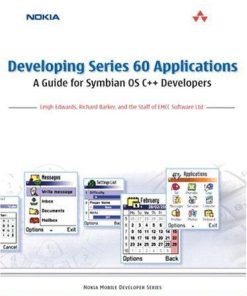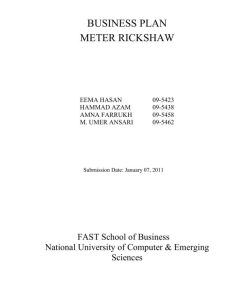60 GHz CMOS Phase Locked Loops 1st Edition by Hammad M Cheema, Reza Mahmoudi, Arthur HM Roermund ISBN 9400776496 9789400776499
$50.00 Original price was: $50.00.$25.00Current price is: $25.00.
Authors:Hammad M. Cheema, Reza Mahmoudi, Arthur H. M. van Roermund , Tags:Springer , Author sort:Hammad M. Cheema, Reza Mahmoudi, Arthur H. M. van Roermund , Ids:9789048192793 , Languages:Languages:eng
60-GHz CMOS Phase-Locked Loops 1st Edition by Hammad M Cheema, Reza Mahmoudi, Arthur HM Roermund – Ebook PDF Instant Download/Delivery. 9400776496, 9789400776499
Full download 60-GHz CMOS Phase-Locked Loops 1st Edition after payment
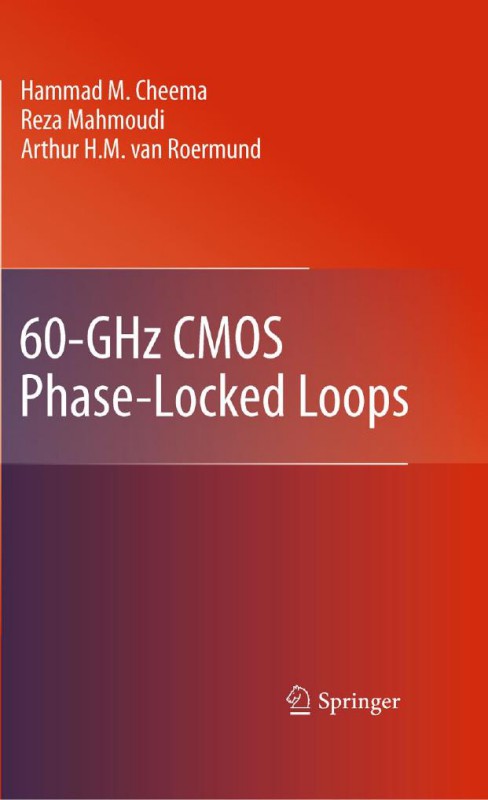
Product details:
ISBN 10: 9400776496
ISBN 13: 9789400776499
Author: Hammad M Cheema, Reza Mahmoudi, Arthur HM Roermund
Abstract This chapter lays the foundation for the work presented in latter chapters. The potential of 60 GHz frequency bands for high data rate wireless transfer is discussed and promising applications are enlisted. Furthermore, the challenges related to 60 GHz IC design are presented and the chapter concludes with an outline of the book. Keywords Wireless communication 60 GHz Millimeter wave integrated circuit design Phase-locked loop CMOS Communication technology has revolutionized our way of living over the last century. Since Marconi’s transatlantic wireless experiment in 1901, there has been tremendous growth in wireless communication evolving from spark-gap telegraphy to today’s mobile phones equipped with Internet access and multimedia capabilities. The omnipresence of wireless communication can be observed in widespread use of cellular telephony, short-range communication through wireless local area networks and personal area networks, wireless sensors and many others. The frequency spectrum from 1 to 6 GHz accommodates the vast majority of current wireless standards and applications. Coupled with the availability of low cost radio frequency (RF) components and mature integrated circuit (IC) techn- ogies, rapid expansion and implementation of these systems is witnessed. The downside of this expansion is the resulting scarcity of available bandwidth and allowable transmit powers. In addition, stringent limitations on spectrum and energy emissions have been enforced by regulatory bodies to avoid interference between different wireless systems.
60-GHz CMOS Phase-Locked Loops 1st Table of contents:
-
Fundamentals of Phase-Locked Loops
- Basic Operation of PLLs
- Mathematical Models of PLLs
- Types of PLLs (Analog, Digital, etc.)
- Key Parameters of PLLs (Phase Noise, Jitter, etc.)
-
CMOS Technology for High-Frequency PLLs
- CMOS Process Overview
- Design Challenges at 60 GHz in CMOS
- High-Frequency Components and Their Limitations
-
PLL Architectures
- Basic PLL Architectures: Charge-Pump PLLs, Ring Oscillators, etc.
- Designing for High-Speed and Low Power Consumption
- Architectures for 60 GHz PLLs: Trade-offs and Optimizations
-
Design of 60 GHz CMOS PLLs
- Transistor-Level Design for High-Frequency Operation
- Loop Filter Design and Tuning
- VCO (Voltage-Controlled Oscillator) Design for 60 GHz
- Phase Detector and Divider Design
-
Performance Analysis and Optimization
- Phase Noise and Jitter Analysis
- Stability and Bandwidth of 60 GHz PLLs
- Design for Low Phase Noise and High Precision
- Power Consumption and Efficiency Considerations
-
Integration with Communication Systems
- Application of 60 GHz PLLs in RF and Millimeter-Wave Systems
- Integration with Transceivers and Other High-Speed Circuits
- Communication Standards and PLL Requirements
-
Advanced Topics
- Digital PLLs and Fully Integrated PLLs
- Noise and Interference Considerations in High-Frequency PLLs
- Techniques for Frequency Synthesis at 60 GHz
-
Simulation and Testing of PLLs
- Simulation Tools for PLL Design and Analysis
- Testing High-Frequency CMOS PLLs
- Characterizing PLL Performance in Real-World Conditions
-
Case Studies and Practical Applications
- Design Examples and Case Studies
- Practical Challenges in 60 GHz CMOS PLL Design
- Emerging Applications in 60 GHz Communication Systems
-
Future Trends and Challenges
- The Future of CMOS PLLs in 60 GHz and Beyond
- Advances in CMOS Technology and Their Impact on PLL Design
- The Role of PLLs in Next-Generation Wireless Communication
People also search for 60-GHz CMOS Phase-Locked Loops 1st:
60-ghz cmos phase-locked loops
phase-locked loop circuit design
phase-locked loops for wireless communications pdf
phase-locked loops
a 75-ghz phase-locked loop in 90-nm cmos technology
You may also like…
eBook PDF
Business Plan Meter Rickshaw 1st Edition by Eema Hasan, Hammad Azam, Amna Farrukh, Umer Ansari

